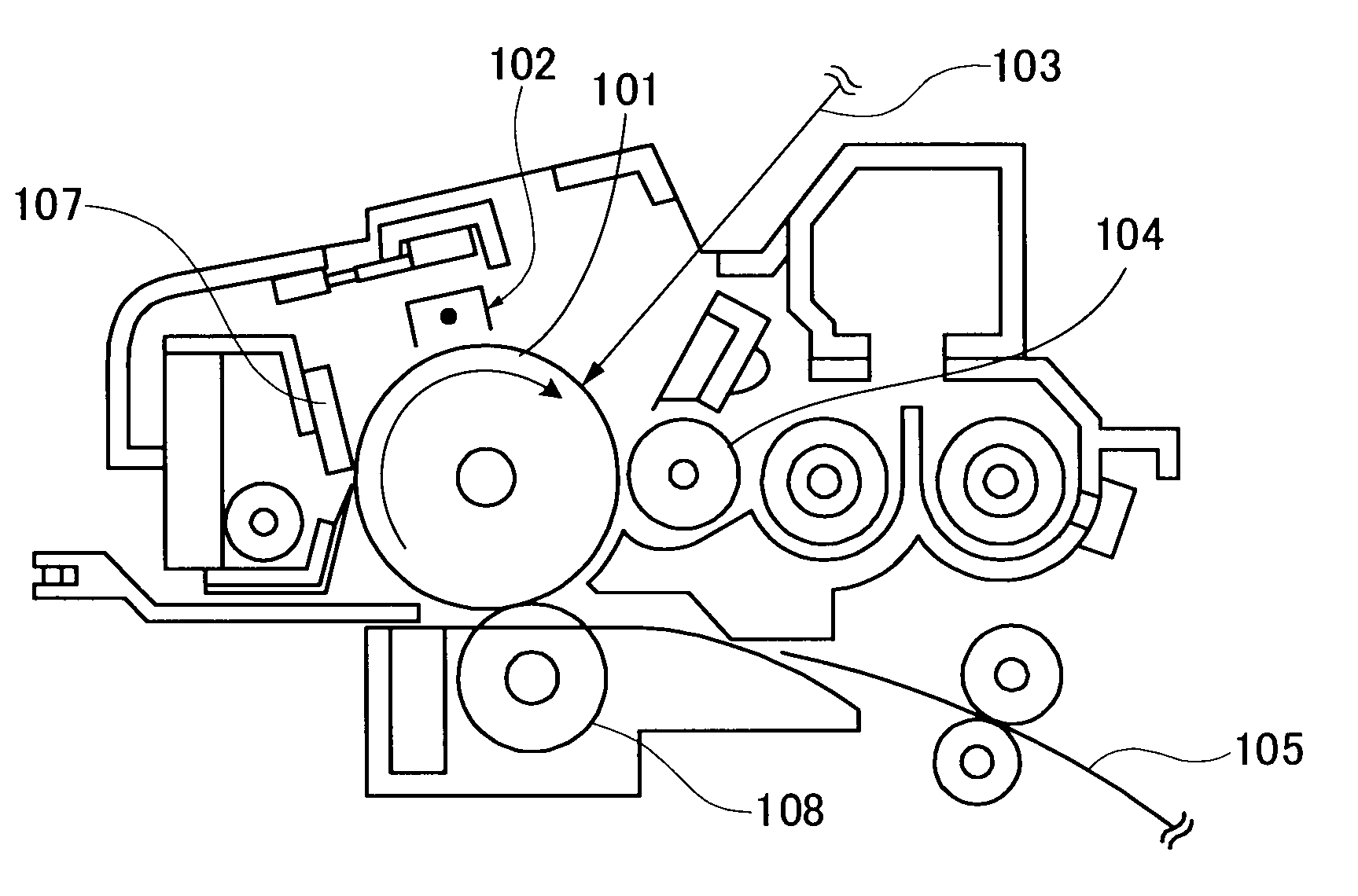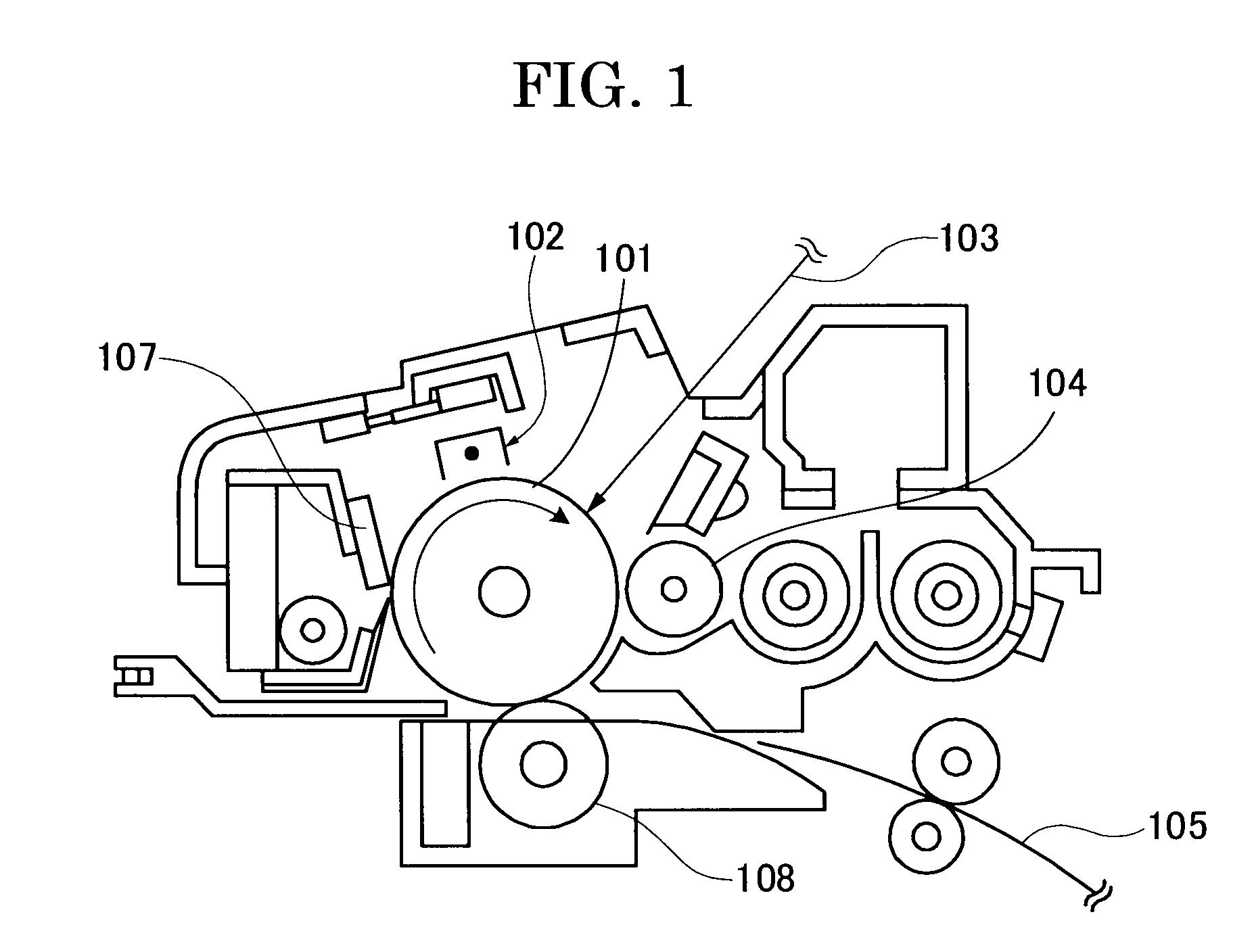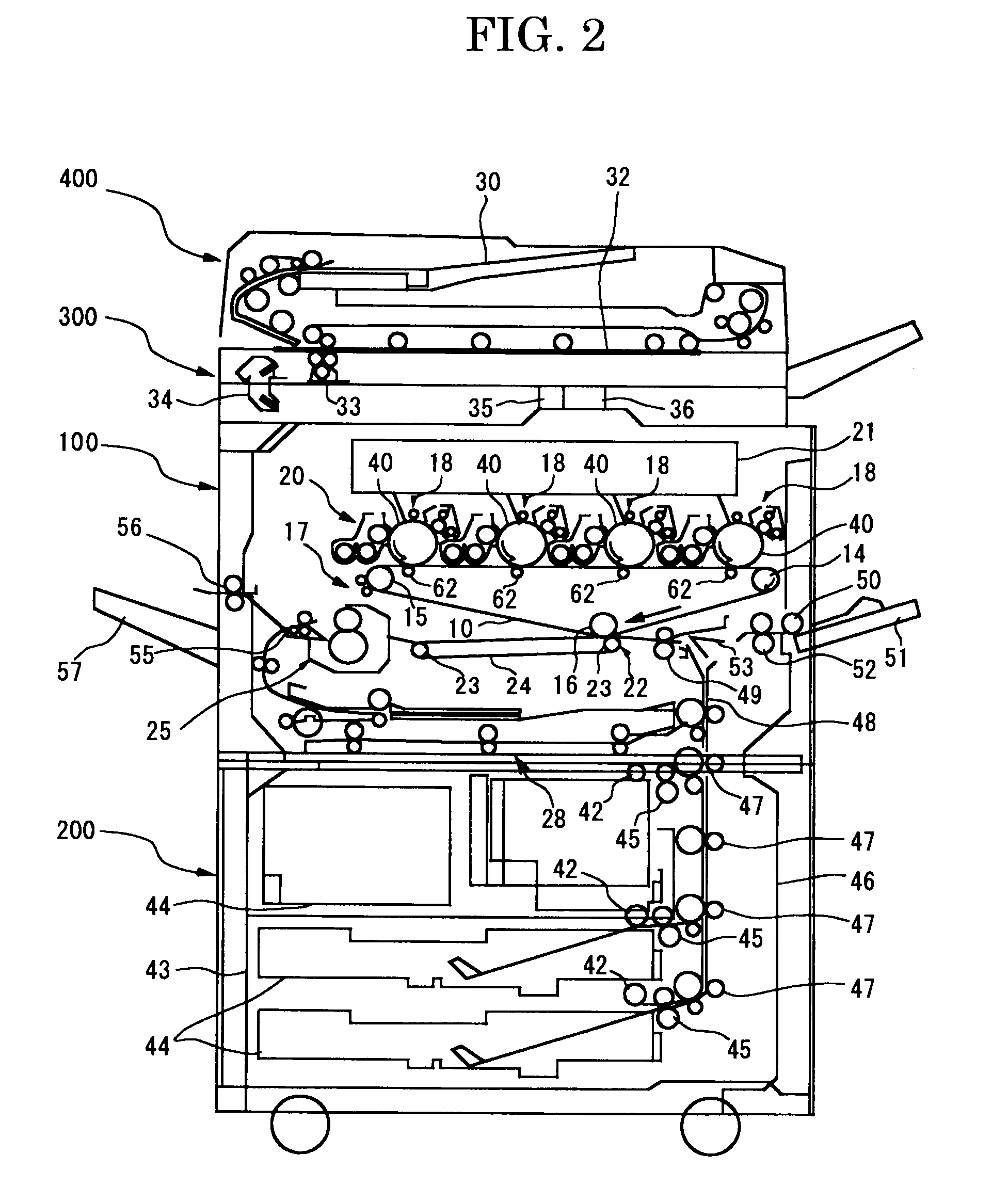Toner, developer, and image forming method
- Summary
- Abstract
- Description
- Claims
- Application Information
AI Technical Summary
Benefits of technology
Problems solved by technology
Method used
Image
Examples
synthesis example 1
Preparation of Pigment Dispersant A
[0337]A 500 ml four-necked separable flask equipped with a stirrer, dropping funnel, gas inlet tube and thermometer was charged with 4 parts of bisphenol A ethyleneoxide adduct, 10 parts of dibuthylolbutanoic acid, 44 parts of N,N-bis(2-hydroxypropyl)aniline and 60 parts of methyl ethyl ketone, and the flask was purged with dry nitrogen gas and heated to 80° C. with stirring. Under stirring 62 parts of isophorone diisocyanate was added dropwise to the flask over 10 minutes, and reacted for 6 hours. The reaction product was cooled to 65° C., and 319 parts of water and 11 parts of 25% ammonia water were added to the flask, and the flask was heated to remove solvents, i.e., 60 parts of methyl ethyl ketone and 330 parts of alkaline water. In this way pigment dispersant A having a melting point of 65° C., acid value of 31 mgKOH / g and amine value of 25 mgKOH / g was prepared.
synthesis examples 2 to 13
Preparation of Pigment Dispersants B to M
[0338]Pigment dispersants B to M were prepared as in Synthesis Example 1 except that the added amounts of ingredients were changed as shown in Table 1.
[0339]The acid values, amine values, and melting points of pigment dispersants B to M are summarized in Table 1.
TABLE 1Pigment disperantsABCDEFGHIJKLMBisphenol A ethylene oxide adduct42222222222 22Dibuthylolbutanoic acid10811209161533016161627N,N-bis(2-hydroxypropyl)aniline44383846385103540556214551,6-Hexanediol000000950000 00Isophorone diisocyanate62626262626258556262626255Acid value [mgKOH / g]31222748253532155530252253Amine value [mgKOH / g]2527242820422522204552—17Melting point [° C.]65526735455246483855477162
synthesis example 14
Preparation of Unmodified Polyester Resin A
[0340]A reaction vessel equipped with a reflux condenser, stirrer and gas inlet tube was charged with 229 parts of bisphenol A ethyleneoxide (2 mol) adduct, 529 parts of bisphenol A propyleneoxide (3 mol) adduct, 208 parts of terephthalic acid, 46 parts of adipic acid and 2 parts of dibutyltin oxide, and reacted for 8 hours at 230° C. under normal pressure. After 5-hour reaction under reduced pressure (10-15 mmHg), 44 parts of trimellitic anhydride was added and reacted for 2 hours at 180° C. under normal pressure to produce unmodified polyester resin A.
[0341]Unmodified polyester resin A thus obtained had a number-average molecular weight of 2,500, weight-average molecular weight of 6,700, glass transition temperature of 44° C., and acid value of 25 mgKOH / g.
PUM
 Login to View More
Login to View More Abstract
Description
Claims
Application Information
 Login to View More
Login to View More - R&D
- Intellectual Property
- Life Sciences
- Materials
- Tech Scout
- Unparalleled Data Quality
- Higher Quality Content
- 60% Fewer Hallucinations
Browse by: Latest US Patents, China's latest patents, Technical Efficacy Thesaurus, Application Domain, Technology Topic, Popular Technical Reports.
© 2025 PatSnap. All rights reserved.Legal|Privacy policy|Modern Slavery Act Transparency Statement|Sitemap|About US| Contact US: help@patsnap.com



